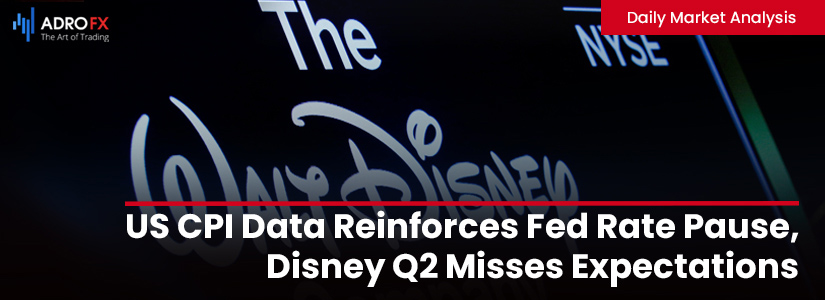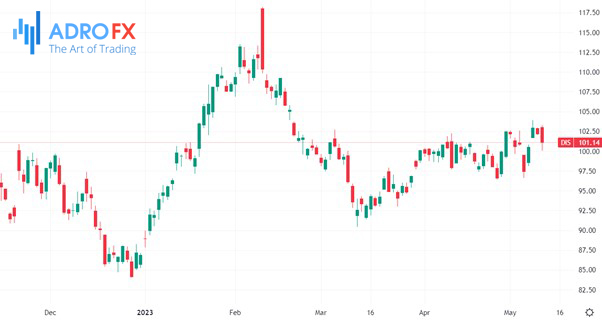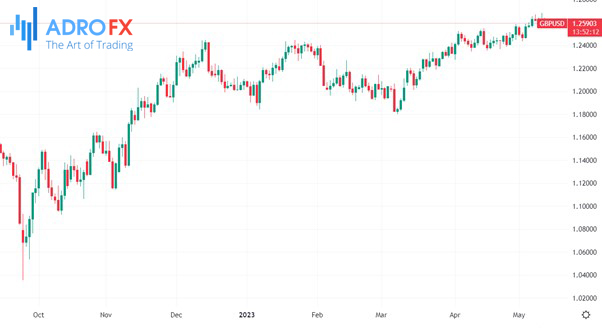US CPI Data Reinforces Fed Rate Pause, Disney Q2 Misses Expectations | Daily Market Analysis

Key events:
- UK - BoE Interest Rate Decision (May)
- UK - BoE MPC Meeting Minutes
- USA - Initial Jobless Claims
- USA - PPI (MoM) (Apr)
- UK - BoE Gov Bailey Speaks
The softer-than-expected US Consumer Price Index (CPI) data released on Wednesday has increased confidence in the market that a US Federal Reserve (Fed) rate hike pause in June is likely. The YoY CPI for April rose 4.9%, slightly lower than expectations of a 5.0% increase, while the monthly CPI in April rose 0.4% after gaining 0.1% in March.
However, the monthly US Core CPI increased 0.4% in April, at the same pace as in March, and the annualized Core CPI rose 5.5%, indicating that core figures remain quite sticky and fading hopes of any Federal Reserve rate cuts this year. As a result, the US Dollar staged a comeback, while investors looked for safety in the Greenback amidst looming banking sector risks and US default fears, causing Gold prices to turn south and settle the day in the red near $2,030.

Markets prematurely took the report as supporting the view that a Fed pause might evolve toward the end of the tightening cycle and even lead to rate cuts in H2, despite Fed governors dismissing this scenario. US yields declined, and the bond rally even accelerated before fading after a $35 bln 10-year auction. German yields followed the US decline but with no outspoken curve move. Equities rebounded immediately after the CPI release, but price action remained choppy. The dollar lost modestly but closed off the intra-day lows.

On Wednesday night, US stock futures showed little change after a mixed session among benchmark averages. The release of fresh CPI hinted at cooling inflation pressures. By 19:40 ET, Dow Jones futures and Nasdaq 100 futures were relatively flat while S&P 500 futures ticked 0.1% higher. In extended deals, Walt Disney (NYSE: DIS) fell by 4.6% after reporting Q2 EPS of $0.93 versus the $0.95 expected, while revenue came in at $21.82 billion versus $21.8 billion.

The upcoming events in the calendar include the release of US PPI and jobless claims data, which are expected to have intraday significance for trading, but the market is currently more sensitive to weaker data than stronger data. Several ECB members are scheduled to speak, and the US will sell $21 billion of 30-year bonds. The short-term upside in US yields is expected to be limited. The US dollar's outlook remains uncertain despite high inflation and strong labor data, and the Bank of England is likely to raise its policy rate by 25 bps to 4.5% due to the UK economy's milder-than-expected setback.

Both Mr. Bailey and Mr. Sunak believe and have expressed that inflation in Britain will decrease significantly in the second half of this year, but currently, there is no hard data to support this prediction. A recent report from Reed revealed that average wages in the UK have increased by 10%, which is equal to the rise in the cost of living. While this is good news for workers, such a large increase in salaries is likely to result in stickier inflation that may require additional rate hikes.
Regarding the currency market, the divergence between the Fed, which has achieved tangible progress in its fight against inflation, and the BoE, which still faces double-digit inflation, could support a bullish outlook for the medium-term prospects of the Cable. The pair is poised to break above a long-term downtrend channel top, and if it succeeds, traders may set their sights on the 1.30 level.









